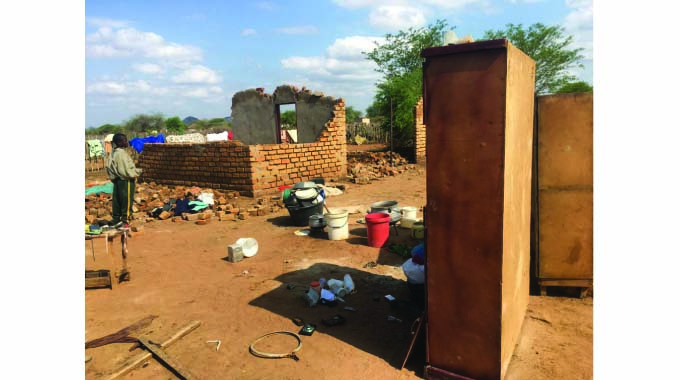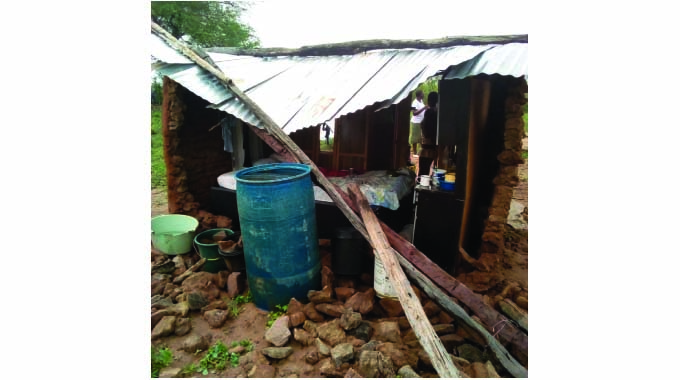320 households fall victim to rain-related disasters

Nqobile Tshili, Chronicle Reporter
ABOUT 320 households were affected by rain-related disasters in the country’s rural areas, with some families losing national documents in Matabeleland South.

Most of the affected structures were built using pole and dagga, while poor workmanship is to blame on some brick-and-mortar houses, a Government report has revealed.
The report covers November and December last year, and the Civil Protection Unit (CPU) said since the country is still in the rainy season, some incidents that might have occurred recently are not covered in the report.
In Matabeleland South in December last year, thunderstorms coupled with strong winds, lightning and hail hit Capitol Block resettlement area in Maqaqeni Village blowing off rooftops, destroying crops and food reserves.
In Matabeleland North, 13 households were affected by heavy rains at Nguminja in Hwange and Government provided food relief, while the National Railways of Zimbabwe provided shelter for severely affected families.
In the Midlands, the rains did not affect much homesteads, but hit public infrastructure such as schools.
In Masvingo, the rains affected 30 homesteads in Chiredzi and damaged power lines, with 25 houses occupied by civil servants in Mwenezi District having their rooftops blown off.
Mwenezi Primary School, Masuture Secondary School and the war veteran’s office were also extensively damaged.
Shamva District was the worst affected in Mashonaland Central, with violent thunderstorms damaging 190 homes in November.
While the report excludes the metropolitan provinces of Bulawayo and Harare, Government says the two have not been spared from effects of adverse weather.
In a CPU report that was tabled before the ruling party Zanu-PF Politburo, Local Government and Public Works Minister July Moyo said the country had experienced several shocks following the onset of the rainy season at the end of October.
The rainfall season has been characterised by heavy rains and flash floods in various parts of the country.
Urban areas have not been spared given the damages witnessed in all major cities.
Social amenities and infrastructure damaged as a result of the heavy rains include schools and clinics, Minister Moyo’s report says.
“Civil Protection Committees have been ceased with the task to conduct damage assessments in order to ascertain immediate needs of affected households as well as costing of damages to social infrastructure to facilitate mobilisation of resources to undertake repairs.
Submissions from other provinces where damages have been reported will be received as rapid damage assessments are being conducted.”
He blamed construction of substandard housing structures for exacerbating the disasters.
“Reports submitted to date indicate that most houses damaged by adverse weather conditions were built using poor building materials of pole and dagga, while poor workmanship on some houses built with brick and mortar resulted in increased vulnerability to harsh weather conditions.
“It is also noted that houses built on wetlands are highly susceptible to the vagaries of weather and this has been the case in many urban areas where flash floods have been experienced.”
The Minister said Government has been using the disaster response plan that was adopted by Cabinet last November.
“Following the downscaling of the regional weather forecast which predicted normal to above normal rainfall, a National Contingency Plan was developed and approved by Cabinet in November 2021.
The plan is the blueprint that Government and partners are using to respond to both hydro meteorological and human induced disasters,” reads the report. — @nqotshili.











Comments